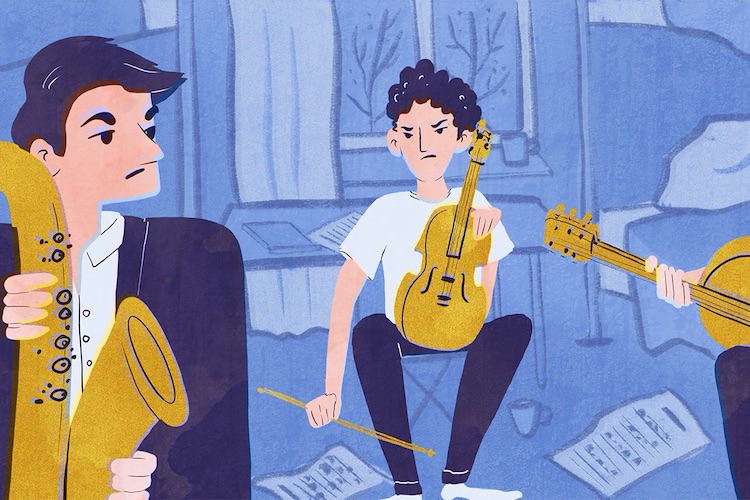Music brightens the eyes: Pupil size is modulated by musical emotions
New research finds that emotional content of the music and listeners’ personal involvement with music influence pupil dilation during listening
news | December 10, 2015

In November Frontiers in Human Neuroscience published an article titled “The Eye is Listening: Music-Induced Arousal and Individual Differences Predict Pupillary Responses”. We asked the first author, Dr. Bruno Gingras from the University of Innsbruck, Austria, to comment on this work.
The Study
To control the amount of light that enters the eye, the pupil reflexively shrinks in bright daylight and becomes wider in the dark. Pupil size is also modulated by thoughts, emotions, or mental effort. For example, the pupil dilates in response to sexually explicit images, or when trying to remember a long series of numbers. Emotionally charged sounds, such as the voice of a couple quarreling, may also evoke pupil dilations.
Music often induces strong emotions in listeners. However, pupil dilation in response to music had not been investigated systematically prior to our study.Using a set of 80 short musical excerpts varying in their emotional content, we showed that listeners’ pupils dilated more in response to musical excerpts that were judged to be more arousing than in response to calm or relaxing excerpts. Moreover, we observed larger pupil dilations for listeners who reported that music plays an important role in their life. Overall, our findings suggest that emotional reactions to music are reflected in pupil size, with both the emotional content of the music and listeners’ personal involvement with music influencing pupil dilation.
Background
We already knew that pupillometry (the measurement of the change in pupil size in response to a stimulus) works effectively with emotional sounds or pictures from the pioneering research of Hess and Polt and the more recent work of Partala & Surakka, and Bradley and colleagues. Considering that music can induce powerful emotions, and that sounds may be more appropriate for pupillometry studies than images, which must be carefully selected to avoid differences in brightness or contrast, we thought that music would be ideal for pupillometry studies. Moreover, because changes in pupil size are controlled by the autonomic nervous system, more specifically by the noradrenergic system which mediates arousal, pupillometry can be used to directly monitor the brain’s response to arousing stimuli.
We were interested in pupillometry as a physiological measure of emotional reactions to music because other measures, such as electrodermal activity (skin conductance), respiratory patterns, and heart rate, are all somewhat invasive methods requiring participants to wear sensors. In contrast, pupillometry does not require participants to wear anything. Moreover, although more precise measurements are obtained by using a chin rest to limit head movements, modern pupillometry methods do not require participants to sit still. In fact, pupillometry can be used with infants and even with animals, making it a very broadly applicable method.
A second research axis of our study involved the impact of people’s individual characteristics on their emotional reactions to music. Indeed, several recent studies have shown that emotional reactions to music vary among individuals. Therefore, we also sought to look at individual differences between listeners, more specifically whether their relationship to music would influence the way their pupils respond to the music. Our analysis thus included both aspects related to the music excerpts, such as their arousal level, and aspects related to individual listeners.
Future directions
Our research shows that pupillometry is a promising tool to examine emotional reactions to music. Importantly, because changes in pupil size cannot be voluntarily controlled, they provide a direct and noninvasive access to listeners’ preconscious processes in response to music. We intend to apply this method to a wider range of musical styles, and to look more closely at the influence of the listeners’ personal characteristics. For instance, we plan on examining the role of a listener’s personality traits, as well as the amount of musical training and the engagement with music, on their pupillary reactions to music.
If you would like to contribute your own research, please contact us at [email protected]





























